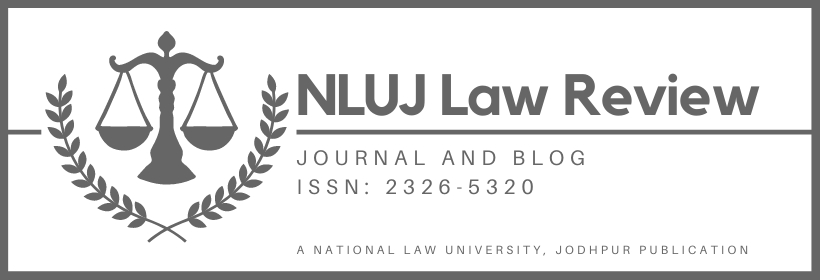Recently, the members of the coordinate Bench of the National Company Law Tribunal, Mumbai (“NCLT”) in the case of Vistra ITCL (India) Limited v. M/s Satra Properties (India) Limited gave conflicting opinions on a point of issue raised during the course of arguments. In the summary proceedings, the issue raised before the NCLT was whether the debenture subscription agreement and the debenture trust deed are liable to be impounded under Sections 33 and 34 of the Maharashtra Stamp Act, 1958 on the grounds that they were insufficiently stamped. Eventually the application under Section 7 of the Insolvency and Bankruptcy Code, 2016 (“Code” or “IBC”) filed by Vistara(“Financial Creditor-Petitioner”) was allowed. However, the Judicial Member Hon’ble Suchitra Kanuparthi, while allowing the application for Corporate Insolvency Resolution Process (“CIRP”), impounded the documents and directed the Interim Resolution Professional to consider the documents upon the payment of the requisite stamp duty. On the other hand, the Technical Member Hon’ble V. Nallasenapathy, while allowing the CIRP, refused to accept the argument of the Corporate Debtor that the documents are liable to be impounded because they were not adequately stamped. He stated that the proceeding under Section 7 of the Code is a summary proceeding and not a recovery proceeding.
In this blog, the authors will critically analyse the opinions of both the Members in light of the concerned issue and position of law. With adequate authorities, the authors will conclude that the view of the Judicial Member cannot sustain under the objectives of the Code for manifold reasons, and that the NCLT cannot delve into the aspect of examining the validity of the documents while dealing with the proceedings under Section 7 or other similar provisions.
For a better understanding of the concerned issue it is pertinent to delve into the facts of the case. The Financial Creditor-Petitioner, Vistra ITCL (India) Limited, subscribed the debentures of” M/s Satra Properties (India) Limited (“Corporate Debtor-Respondent”), which were to be redeemed as per certain terms and conditions. The latter failed to redeem it in spite of repeated requests. The Financial Creditor, therefore, filed an application under Section 7 of the Code for initiation of the CIRP. It is pertinent to note that the case of the Corporate Debtor-Respondent was on the grounds that there had been an alleged novation of the contract with a future settlement, due to which the prior liability was subsumed and in no way denied the existence of the liability. The Judicial Member of the Bench, while allowing the application, impounded the documents of the Debenture Agreement on the grounds that they were insufficiently stamped. The question that merits consideration is whether the Adjudicating Authority (“AA”) can impound the documents under Section 7 proceedings.
The blog forwards a multipronged argument to show that while examining the application under Section 7, the NCLT can only examine the existence of the debt and default, and cannot in any way go beyond that by impounding the document(s) unless the existence of the debt is to be proved by the document itself. It begins with the discourse on the existing jurisprudence on the subject which help in ascertaining the powers of the AA. On the second stop, it seeks to deliver a comparative analysis with similar provisions under the Arbitration and Conciliation Act, 1996, (“Arbitration Act”) and forwards the ground to adopt a similar argument when it comes to adducing evidence at the pre-stage. At the final stage, it canvasses a broader picture by analyzing the objectives and the intent of the framers of the Code, i.e., the mischief it sought to correct.
A. Existence and validity of debt.
Firstly, there is a vital difference between existence of the debt and validity of the debt. Clause (4) of Section 7 clearly specifies that “The Adjudicating Authority shall ascertain the existence of a default from the records of an information utility or on the basis of other evidence furnished by the financial creditor under sub-section”; it encapsulates application by financial creditors such as in the present case.The Supreme Court’s judgment in the Innoventive Case, a highly regarded case which acts as a guiding beacon for future IBC cases, held that under Section 7 of the Code, the AA has to merely satisfy itself that a default has occurred and the scope of enquiry is restricted to the records brought forth by the financial creditor.
Therefore, the jurisprudence of Section 7 clearly requires that the applicant is merely required to prove the existence of the debt. While referring to the Innoventive Case, the NCLT allowed the Section 7 application on the grounds that the existence of debt and default was clearly demonstrated by the documents that were brought on record.
The existence of debt can be confirmed by the documents that are brought on record. In the present case the impounded documents were not brought on record by the Financial Creditor-Petitioner, rather the Judicial and the Technical Members in concurrence have relied on the balance sheet and the letters requesting postponement of the redemption written and sent by the Corporate Debtor-Respondent. This is a direct and implicit admission of existence of the liability as per Regulation 8 (2) (iii) of the Insolvency and Bankruptcy Board of India (Insolvency Resolution Process for Corporate Persons) Regulations, 2016 which provides for the documents that the financial creditor may submit to establish the debt due to him. Thus, the issue of inadequate payment of stamp duty does not arise as the Financial Creditor-Petitioner did not intend to rely on the concerned documents. Had the case been where the existence of debt was solely being proved by the concerned documents, then they would have been liable to be impounded as complying with the stamp duty requirements is must in order for it to be admissible and enforceable.
B. Section 7 of the IBC v. Section 11 of the Arbitration and Conciliation Act, 1996
While forwarding the contention of insufficiency of stamp duty, the Corporate Debtor-Respondent relied on the judgment of the Supreme Court in SMS Tea Estates and Garware Wall Ropes. In these judgments the Court had held that before proceeding with Section 11 applications and likewise, if the arbitration agreement is present in an insufficiently stamped agreement, then the provisions of the Indian Stamp Act, 1899, mandates the judge to impound the documents and send it back for adequate payment of the stamp duty and penalties as prescribed by the Stamp Act. Garware Wall Ropes is an affirmation of its former part with harmonious construction between the Stamp Act and the Arbitration Act.
It is pertinent to note that NCLT in the case of Bennett Property Holdings Company Limited s. Brick Eagle Affordable Housing Advisory refused to rely on the dicta in SMS Tea Estates and Garware Wall Ropes on the grounds that the “order was passed in arbitration proceeding and not while considering petition under IBC, 2016”. The basis of this refusal lies in the fact that while considering the application under Section 11 of the Arbitration Act, the perusal percolates down to the arbitration clause or the agreement either present in the parent agreement or separately, therefore it is necessary for it to be enforceable and brought on record; whereas, Section 7 of the IBC provides for no such requirement and the existence of the debt can be proved in either manner convenient for the applicant, and the Courts perusal shall strictly be limited to the evidence brought forward.
C. Objective of the IBC
After a prolonged struggle in the Indian credit market, the Government of India enacted the IBC touting a consolidated and robust code governing insolvency and bankruptcy matters. The essence of the IBC lies in time-bound settlement of claims. On a thorough perusal of Part I, Chapter II of the IBC for CIRP, it is conspicuous that the provisions adopt a pro-creditor approach by allowing the creditors to take control as soon as the application is listed. This is done in view to provide greater security for the funds advanced by such creditors. The words of Section 7 are strictly limited to existence and there is no tacit presence about the procedure to prove such existence. Further the Code provides for a time constraint of 14 days on the AA, i.e., the NCLT to discharge the application under Section 7. There will be a stark violation of these intentions and objectives if the NCLT is granted the power of this latitude to impound the documents which are not even brought on record while dealing with Section 7 or likewise applications. Enough powers have been granted to the Resolution Professional to deal with the validity and proof of default, and the NCLT shall strictly restrict itself to its function of examination of the existence of a debt and not go any further in its quest to do everything right.
Conclusion
The IBC was enacted to instill confidence and faith in the Indian credit market. The distinguishing factor of the Code lies in the establishment of a framework for quick resolution of underlying debts. The provisions of this special legislation shall be interpreted positively, and the authorities shall function within the contours set by the Code in order for it to attain the desired objectives. The proceedings under Section 7 impose the responsibility in the AA to ascertain existence of debt from the information available and not compulsorily from any documentary evidence, and hence, the insufficient stamping should not act as an impediment. Further, the provisions of the Stamp Act are a fiscal measure intended merely to collect revenue, and if at all go to the validity of the agreement and not its existence, it will again be in contradiction to the IBC. Furthermore, Section 128 of IBC overrides other laws for the time being in force.
The authors are of the view that while impounding the documents, the NCLT went beyond the scope of Section 7 and the power conferred upon it by the provision for the above reasons. If this trend is set forth, then it would directly hamper the future proceedings and set a precedent which might allow the AA to divulge into issues which do not materially hamper the case, in turn negating the legislative intent behind the Code.
This article has been authored by Mudit Ahuja and Ramkrishna Panigrahi, students at ILS Law College, Pune.



